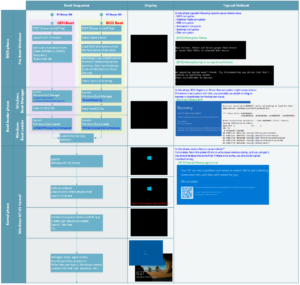CDI Benefits on User Experience
- Way faster logon times!
- End users don’t need to worry about installing software clients like Citrix Receiver / Workspace App, AWS Workspaces or Microsoft’s RDP. The Kasm users login to a web console using a browser based client.
- Google Chrome, Firefox and Edge can run on both Windows and Linux, the advantage from using a CDI or VDI is that the user container is isolated to protect your data from the user client.
Logon times
One advantage of a CDI is that we don’t need to power on and boot up the session’s operating system. The container is an abstraction of the underlying OS so we can build a fresh session and login faster than VDI.
I. Understanding the Legacy VDI delay
The OS is virtualized to run on a slice of the hypervisor but has to do the same process as a bare metal OS and this is why on a legacy VDI you usually have a buffer of turned on machines so that the user doesn’t have to wait for boot and only get the login delay.


II. The user’s compute
We have seen the increase of SaaS, web apps and multi-os software. Microsoft’s continuous development of Windows Virtual Desktop, Windows Subsystem for Linux and recently adopting chromium for Microsoft’s Edge points are examples of the shift in end user computing resulting in lighter endpoints. In large corporations a common complain is that the company’s laptop has less specs than the one at home but I cannot use my personal laptop because I have to install software or the company lacks security around BYOD.
If you don’t have any dependent legacy software that’s only written for Windows then you can save on licensing while maintaining security, reliability and performance with Linux and get further cost savings by running containers.
Next I will provide some sources and a quick closing summary